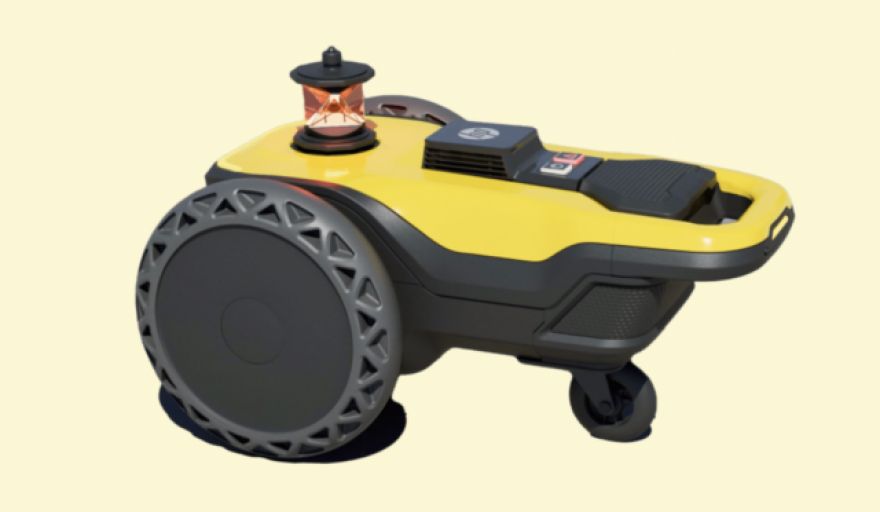
(Photo: Charles Sims/Unsplash)Less than two years after the PlayStation 5’s debut, Sony is rumored to be working on a new iteration of the console that would have a detachable disk drive. Anonymous sources familiar with Sony’s development plans say the company intends to release an updated version of the popular console in September 2023, to tech journalist Tom Henderson. The redesigned console could rectify gamers’ indecisiveness over whether they’d rather own the disk-compatible version or the digital edition (which, of course, requires finding an available PS5 in the first place.) Sony’s new iteration is said to contain all the same hardware as the PS5s already on the market.

(Photo: Engin Akyurt/Unsplash)The last several years have seen a sharp increase in the number of milk alternatives hitting supermarket shelves. Where cow’s milk once sat alone now sits soy, almond, oat, macadamia, coconut, hemp, cashew, and even pea milks. But as much as these products aim to replicate the smooth texture and slightly-sweet taste of cow’s milk, most are far from the “real thing.” Consumers who like the experience of drinking cow’s milk but want to avoid the product for environmental, animal welfare, or dietary reasons have yet to find their perfect match. Thanks to a novel form of milk synthesis, that might change.

At GTC this morning Nvidia finally pulled the wraps off its much-anticipated Ada Lovelace architecture along with three GPUs based on it. Jensen unveiled the GeForce RTX 4090 GPU and two RTX 4080s based on different dies. This is a first for the company and something that’s sure to confuse gamers. One is allegedly based on the AD104 die, with the other using the even-smaller AD103 die. The headline feature is the difference in memory — 16GB versus 12GB — but they have vastly different specs. Jensen didn’t discuss the Ada cards’ details, but the . He noted Ada is up to 4X faster than the previous flagship in ray tracing for certain titles.

During the Nvidia keynote at GTC today, the company unveiled its new Jetson Orin Nano system-on-module (SOM) and announced updates to its Nova Orin robot reference platform. At $199, the new Orin Nano is more expensive than the older Xavier-based Jetson Nano. Nvidia claims that the new hardware is much faster, and the system includes 4GB and 8GB storage options, instead of 2GB/4GB. Both tiers feature an Ampere GPU and include deep learning and computer vision accelerators. Nvidia says that the 8GB version can perform “up to 40 TOPS” for between seven and fifteen watts. The 4GB version should deliver about half that performance, but with power options “as low as 5W to 10W.

The (JWST) was designed to pick out the faintest signals from objects billions of light years away, but that doesn’t mean it can’t be great for checking out things in our own backyard. After a few weeks back, NASA has turned the next-generation telescope toward Mars. NASA says Webb offers a unique view of Mars with its unparalleled infrared sensitivity. Unlike Hubble, the JWST left Earth orbit after launch. Because its infrared instruments are so sensitive, it needed to get out into the frigid depths of space. It’s sitting at the L2 Lagrange point, about a million miles away.

(Photo: @pixel6propix/Unsplash)The Senate is expected to ratify a treaty amendment this week that would officially phase out the use of certain heavy pollutants. Hydrofluorocarbons, or HFCs, are industrial chemicals most frequently used in air conditioning and refrigeration. Though each type of HFC has a different impact on the environment, the category is overall considered far more damaging to the atmosphere than other pollutants, with the most common (HFC-134a) carrying 3,790 times as much climate-warming potential as carbon dioxide over a 20-year period. With more buildings around the world beginning to incorporate air conditioning, HFC-related emissions are expected to grow at a rate of at least 10 percent per year without legislative and industry action.

(Photo: HP)HP may have been in the printer game for quite some time now, but its newest printer is unlike any it’s made before. SitePrint, an autonomous robot, prints site layouts right onto construction site floors. The printer’s exterior consists of a rugged body on three wheels. It runs on two rechargeable batteries, each of which offers up to four hours of printing time. On top are a couple of basic buttons (one of which is likely an emergency stop, given that it’s red) as well as a Topcon layout navigator for visibility and obstacle avoidance. Inside sits the actual printer, which is designed to work with a “portfolio of inks for different surfaces, environmental conditions, and durability requirements.

The moon is our nearest celestial neighbor and the only body aside from Earth where humans have ever set foot, but there’s still a great deal we don’t know about it. China’s Chang’e-5 mission in 2020 returned the first lunar samples since the end of the Apollo program in 1976, and scientists now report the discovery of a new mineral in the payload. Even more interesting, the tiny crystallized mineral could also be the key to generating energy through nuclear fusion. Chang’e-5 landed on the on Dec. 1, 2020, just a few days after it launched from China’s Hainan Island space center.

Professor Brian Pickles and paleontologist Caleb Brown stand next to the exposed parts of their newly-discovered fossil. (Photo: Melissa Dergousoff/University of Reading)When we think of dinosaur fossils, we often think of footprints preserved in sandstone, or bones carefully displayed inside a museum. But what about mummified dinosaurs? That’s what researchers think they’ve found lodged into a hillside in Alberta, Canada. Professor Brian Pickles, a paleontologist at the United Kingdom’s University of Reading, recently led a scouting trip at Alberta’s Dinosaur Provincial Park. The park is a United Nations Educational, Scientific and Cultural Organization (UNESCO) World Heritage Site known for its abundance of strikingly diverse dinosaur fossils.









